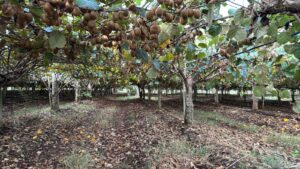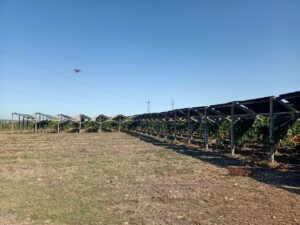The latest events that have occurred in Emilia-Romagna have dramatically highlighted the how much the effects of climate change can impact people's lives and the budgets of agricultural companiesWe are facing a phenomenon which no longer only concerns future scenarios, but is now an integral part of this. Precipitation, increasingly concentrated in short intervals of time and in limited areas, is transforming our agricultural landscape, severely testing the sector's adaptability.
One aspect that seems contradictory, but which is actually one of the main characteristics of this change, is thealternation of extreme events: heavy rainfall and flooding are accompanied by long periods of drought. The summer just gone is an emblematic example, with several regions of Southern Italy finding themselves literally without water resources, with devastating consequences for crops and the entire agricultural ecosystem. This dualism between floods and Drought is becoming the new normal, And the agricultural sector pays the highest price.
The economic repercussions for the agricultural sector
Italian agricultural companies, already put to the test by market dynamics and from the pressure of production costs, they see now increase the risks associated with extreme weather events. Over the last twenty years, damage caused by natural disasters – such as hailstorms, droughts, floods and frosts – have impacted company balance sheets by an annual average of 1.5 billion euros. This data highlights how crucial it is to find srisk management tools that can support farmers in such an uncertain and unstable context.

Agricat: an innovation model for the protection of Italian agricultural companies
The central objective of the Agricat fund, which we told you about here, is ambitious and strategic: extend insurance coverage to all Italian agricultural companies, offering a complete protection against risks associated with extreme weather events. Currently, only a portion of farmers use private insurance tools, leaving a large portion of the sector exposed to losses that could compromise production continuity. Agricat positions itself as an innovative response to improve the resilience of the entire agricultural sector, offering a safety net in a context in which devastating climatic phenomena are becoming increasingly frequent and difficult to predict.
This is a cutting-edge agricultural policy intervention, which makes Italy the first European country to have set up and implemented such a mechanism collective protection. This approach not only protects individual companies, but strengthens the agricultural system as a whole, allowing the country to address the challenges posed by climate change more effectively and the volatility of the global agricultural market.
Agricat's management and operational challenges
The implementation of a fund of this scale represents a complex challenge also from a management and administrative point of view. The operational management of the fund must in fact be aligned with the vast territorial extension of catastrophic events, which every year affect thousands of agricultural companies distributed throughout the country. The difficulty lies not only in the high number of companies involved, but also in the need to quantify the damages suffered quickly And ensure economic relief as quickly as possible.
Unfortunately, in the first year of application of the fund, some issues emerged some operational difficulties. For the 2023 season, 13,808 applications were submitted, but many of these were deemed ineligible. At August 6th, Alone a minimal part of the available funds had actually been used: just 16.3 million euros, out of a total annual budget of almost 350 million, corresponding to less than 5% of the allocated resources. This data highlights the need to improve the request management process, to allow for a more effective and widespread distribution of available funds.
The role of digital technologies: the key to accelerating processes
To overcome these difficulties, especially in a context where damages must be assessed in a short time and when crops are still in the fields, the adoption of advanced technologies becomes essential. There speed and theaccuracy in the damage assessment they are crucial for allow for rapid provision of compensation without compromising the quality of assessments.
In this context, the use of satellite detection systems as TETHYS it turns out to be fundamentalThis technology is capable of to rebuild, in hindsight, crop conditions in a given territory and to identify precisely when and to what extent they have been affected by adverse events. Thanks to TETHYS, it is possible to obtain a detailed overview of the situation, speeding up the assessment times and improving the effectiveness of the damage assessment process. This technological approach not only allows for reduce response times, but It also improves the accuracy of the estimates, ensuring that compensation is provided promptly and in proportion to the damages suffered.










Add comment
You must be logged in to post a comment.